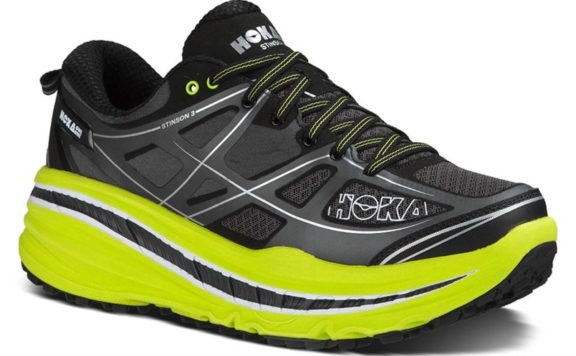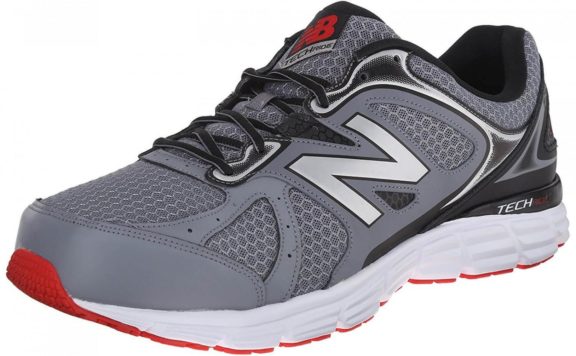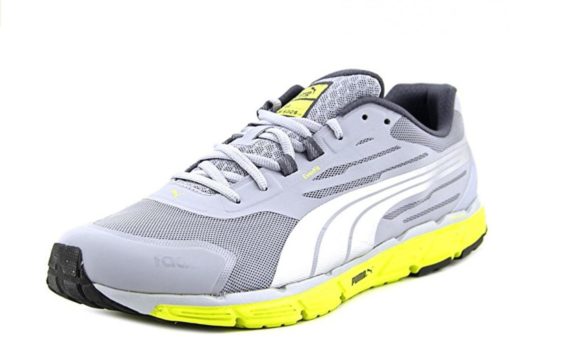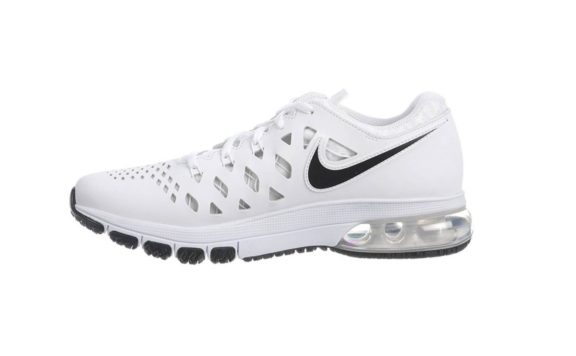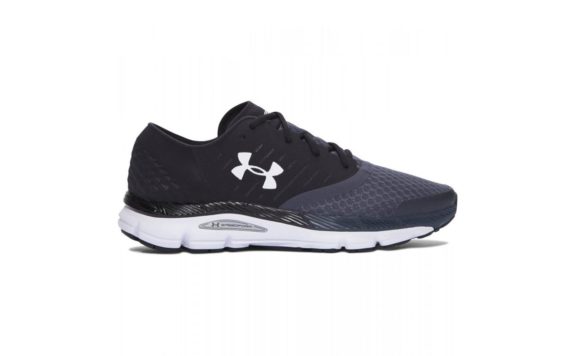Details
Brand
Arc’Teryx
Breathability
8/10
Latest Version
Yes
Terrain
Trail
Type
Neutral
Key Features
• Outsole comprised of Vibram Idrogrip in the forefoot & Megagrip in the heel• 3.5 millimeter chevron lugs for multiple surface traction• 9-millimeter midsole offset• EVA and Polyolefin midsole composition• lace system for adjustable fit• TPU overlay for forefoot and toe protection• Integrated Adaptive Fit Sock Liner for a precise fit and keeping debris out• 4mm OrthoLite molded insert for additional underfoot cushioning
Upper
The upper is much different from what you may be used to, but it somewhat parallels that of models in Salomon’s S-Lab series. Instead of an all-around mesh with overlays, it’s close to an all-around overlay with mesh windows. Inside is a sock liner which adds a snug layer between your foot and the outside. You have some cushion in the heel area and around the collar but the rest is the liner. The shoe is very comfortable though. The fit is almost on the line of being perfectly snug and being somewhat tight. When I first slipped on the shoe, my thought was “oh no” seems too snug, but as I got my foot in that thought eased up as the sock liner compensated and conformed very well. The opening of the collar area is a bit small, but don’t let that fool you, these fit well and have ample room in the forefoot.;In addition, the lacing system allows for manipulation of the fit. The way it is designed, you can cross hatch the lace, hooking it over to pull the forefoot area of the upper together for a much more solid fit, and unlatch to allow more foot space. This is for the purpose of forcing a secure fit for scrambling and/or ascension of rock ridden areas, and loosening as needed to give proper room for the toes to splay as would occur naturally in running motion as you push off the ground.
Midsole
The midsole is fairly modest. It’s a blend of an Ethylene-vinyl acetate rubber and Polyolefin. EVA is naturally lightweight and acts as a cushion, which translates into shock absorption and underfoot protection. Most running shoes use this material composition as it’s very effective. It certainly is so in the Norvan VT, although the midsole is somewhat thin in the forefoot. This may be to cut down weight or allow for a higher degree of flexibility. The heel area is about standard thickness, nothing extreme here.;I’m not one to strike hard, so the overall cushion factor and shock absorption were sufficient for me. When I got the shoe I was not expecting a Hoka, so this was not a factor I kept in mind, but if you are expecting, or used to running in shoes that have a lot of underfoot cushioning you may get a surprise in the box. Although it’s a trail shoe, it’s on a different side of the spectrum.
Outsole
The outsole profile is a bit unique on this one. Because the shoe is meant to be sort of a hybrid, the design of the outsole is a balance of aggressive traction and sticky grip. What they have done is included a tread design that is shaped strategically, pronounced enough to bite the earth, but with flat heads to allow surface space, giving the sticky Vibram rubber the ability to grab onto flat, hard surfaces.;It was a great choice in going with Vibram’s material composition for their outsole as their Megagrip is great on solid, flat surfaces. The lug profile was more effective for me as I tend to gravitate toward the dirt naturally when I’m running in such a setting, although in the mountains you will get a lot of rocks, especially if you’re not following a trail. Of course, navigating through and over the rocks was more effective because of the lug tips being flat.
Breathability
Despite the all-around overlay, the breathability is quite satisfactory. The mesh windows are quite revealing of the inner sock liner, and the liner is extremely porous giving airflow its way, perfectly allowing temperature regulation and drainage. Without a tongue, airflow directly from the top of the shoe is also allowed, and it’s more or less direct contact, especially if you go sockless. This is great as I certainly appreciate breathability but you really have to consider this factor if you are someone who prefers a more sealed trail runner. If that’s the case, there is a Gore-tex version of the shoe available.
Comfort
I was surprised at how comfortable the shoe was. As mentioned, the fit comes off as small at first, but as you get your foot in everything just comes together perfectly. The sock liner isn’t extremely flexible but it is just enough to accommodate for your foot and firm enough to secure it. Despite not having much padding all-around, it is still a shoe I rate high in comfort for the fact that it fits naturally. I did not go sock-less in any of my runs with the VT, but I would assume that would have an entirely different feel as the liner is a bit rough to the touch.
Style
The build of the shoe is that of a road shoe, or something you would see in and S-Lab shoe from Salomon. This was the first thought upon seeing it. The style is definitely not casual, and the lace system shows it’s for very specific use. For color schemes, there are options such as black red and blue, all in flat colors so nothing wild here. The overall style is decent.
Durability
Vibram’s Megagrip material is not only known to be super sticky. It’s also a very durable composition. The same can be said for the Idrogrip material that’s used in the forefoot of the outsole. This ensures no matter how much rocks you have to navigate over, the shoes will last. Given I’ve easily done 60+ miles and the outsole shows almost no wear is good. Although the majority of the miles the shoes were put through were of dirt and mud. I’m quite familiar with Vibram’s material and have several shoes with outsoles comprised of it, so I can attest to how much of a beating it can take.;The mesh on the upper is really rough. It doesn’t have the consistency of that which you would find on road specific shoes. It’s rather firm, non-flexible and almost snag-proof. No need to worry about protruding twigs penetrating the mesh. Not much will find its way through this cage.
Protection
The protection here is sufficient, although nothing extremely impressive. The factors that come into play in this regard is an added layer of TPU around the toe-box that stretches to the arch on the lateral side of the shoe. This is a well appreciate addition of protection to areas that would bump or scrape surfaces often, however, the overall build on most of the upper is limited to three simple layers, the sock liner, a thin overlay to the sock liner, the overlay on in the toe area and over the arch.;There isn’t anything extra, and when I say extra, I mean your feet are already protected enough and you’re not likely to sustain any damage from penetration (or at least easily), but if that loose rock does tumble on your foot, expect to feel it unless it lands on your toe where the force will be nullified to a degree. Consider this and be careful out there. A shoe isn’t a substitute for awareness.
Responsiveness
The responsiveness is a very positive factor here. The sole is altogether quite firm but the outsole is sectioned in a critical area of the forefoot right before the arch where flexion of the toe-off phase occurs greatly. This allows the forefoot to effectively bend independently of the whole and in conjunction with its stiff nature gives an impressive response. This is true with most shoes that are quite stiff as it generates more force to flex the material, and that force is returned right back where it came from when the pressure is relieved as your foot comes off the ground. With the sectioning of the outsole and grooves;it takes a bit less pressure to flex as most of the resistance is generated from the softer EVA midsole. This means less force is generated overall, but being able to more easily flex the shoe in the propulsion phase amount for a more than ideal return of energy.
Terrain
The VT is made for trails, but more specifically Alpine conditions where you will be at a constant upward climb. The outsole profile plays a large part in this regard. It’s equipped with 3.5 millimeters, strategically oriented lugs. On the forefoot, the lugs dig backward to effectively dig into the ground as needed for elevation, and the lugs on the heel face the opposite direction for the downhill. To combat unpredictable and ever-changing mountainous terrain, the lugs are shaved off giving the ability to grab traction in the case you find yourself striking rock instead of earth. The lugs are to be appreciated and I much prefer their ability on dirt as they grab traction well. That’s not to say the ability of them to hold on the rock isn’t there because it certainly is given Vibram’s sticky Megagrip rubber.
Price
Just like its purpose, its price is quite steep. You can find the Norvan VT in retail for $170.00, and the fact that it just released means it likely won’t be dropping much any time soon. This is a value for those who need it for its specialized purpose as it gets the job done but if you plan on using the shoe for casual trails it’s probably going to be more than what you need, as this shoe is not very affordable.
Drop
You’re looking at a 9-millimeter heel to toe differential here. This is quite expected for the purpose of the shoe as you will be using the heel quite a bit as a breaking system to regulate downward momentum. I found myself doing so quite frequently as I picked up speed downward and running on my forefoot as I climb upward.
Bottom Line
Out of all shoe models made for similar terrains I’ve owned, I would compare the Norvan VT to Salomon’s S-Lab Wings. They feel very similar and not to mention have a close appearance. That’s a positive as Salomon’s S-Lab series contains two of my favorite shoes of all time. I’m quite fond of the performance of these although I feel the inclusion of a cushioned tongue would have added a whole lot to the shoe without comprising much. The sock liner is a great choice and perhaps contributes to my favorite aspect, its snug comfort. The lacing system does well and effectively secures the forefoot when cross-hatched although you may need to loosen it a bit at that point if you typically start from a very tightly pulled lace-up.;The Norvan VT is overall an effective trail runner that I would suggest in trying out as long as you are not a die-hard fan of extreme cushioning.



